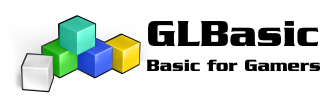There should be no problem, if it requires to use some specific OpenGL extension or API - that could be done in Inline.
In core GLB is fast enough to render separate images for left & right eye, so I'm looking forward to any info about this.
In core GLB is fast enough to render separate images for left & right eye, so I'm looking forward to any info about this.




 Thanks for clarifying that.
Thanks for clarifying that. and really any GLB project
and really any GLB project  this is something that could be used to create interesting 2d effects along shaders.
this is something that could be used to create interesting 2d effects along shaders.